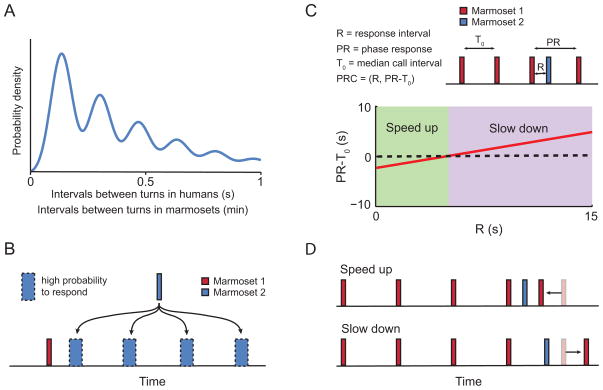Figure 4.
Coupled oscillators dynamic of vocal turn-taking. A. Schematic of the probability distribution of the interval duration between turns during vocal exchanges in humans and marmosets. The same pattern of distribution of the intervals is observed in humans and marmosets, but with a difference in the time scale. B. Coupled rhythmicity implies that once a marmoset calls (red rectangle), the responses from a second marmoset (blue rectangle) will arrive with high probability at one of the intervals regularly spaced from each other (blue rectangle with dotted outline). C. Illustration of the correlation between response intervals (R) and phase response (PR) when there is an entrainment between call exchanges of Marmoset 1 (red rectangle) and Marmoset 2 (blue rectangle). When R is short (green area) PR is shorter than the median call interval (T0), therefore there is a speed up in the call interval of Marmoset 1. When R is long (purple area) PR is longer than the median call interval (T0), therefore there is a slow down in the call interval of Marmoset 1. D. Schematic of the effect of short and long R on PR. Convention as in C. The transparent red rectangle indicates where the call from Marmoset 1 would be produced had Marmoset 2 not responded.

